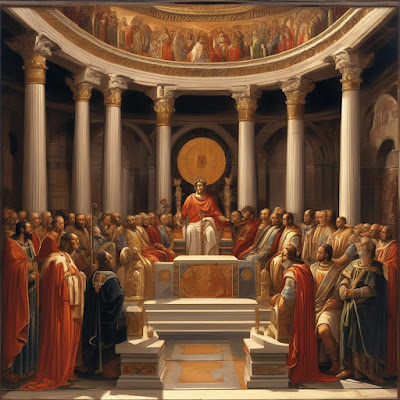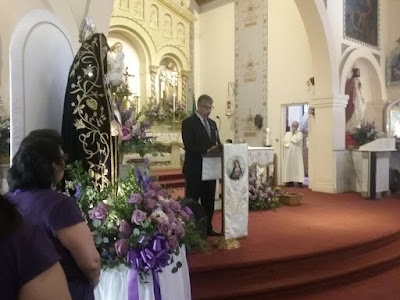The destruction of the Jewish Temple in Jerusalem in 70 AD and the subsequent Bar Kokhba Revolt (132–135 AD) marked profound turning points for both Judaism and the emerging Christian faith. For Judaism, these events led to the end of the Temple-centered worship and priesthood, ushering in the rise of Rabbinic Judaism, a faith centered around synagogues and study of the Torah, led by rabbis. Christianity, however, absorbed aspects of Temple worship and priestly symbolism into its practices, reinterpreting them in a new context as the early Christian community developed a unique theological and liturgical identity.The Impact of the Jewish-Roman and Bar Kokhba Revolts
The Jewish-Roman War (66–70 AD) culminated in the Roman destruction of Jerusalem and the Second Temple, which was the heart of Jewish worship and sacrificial rites. The Temple was where the Jewish priesthood conducted sacrifices, followed an intricate liturgical calendar, and interceded for the people. However, after the Temple’s destruction, the priesthood lost its central role because there was no longer a place for sacrifices or for priestly service according to Torah law. Following the Bar Kokhba Revolt, Roman authorities enforced even stricter control over Jewish practices, expelling Jews from Jerusalem and effectively ending hopes of rebuilding the Temple.
Judaism’s Transition to Rabbinic Leadership
With the priesthood and Temple rituals no longer viable, Judaism evolved to maintain its traditions and adapt to the new realities of exile and diaspora. Rabbis, teachers and interpreters of the Torah, emerged as central figures, replacing the priesthood as spiritual and legal leaders. This shift was formalized through the development of the Mishnah and Talmud, which preserved Jewish laws and customs through interpretation and commentary rather than Temple-centered worship. Synagogues became places of gathering, prayer, and study, marking a transformation from a sacrificial to a study-based and communal worship tradition.
Continuation of Temple Worship Concepts in Christianity
In early Christianity, many Jewish followers of Jesus viewed him as the fulfillment of Jewish prophecies and the “true” Temple. Christians did not need a physical Temple to practice faith, seeing Jesus’ death and resurrection as a spiritual replacement for the sacrificial system. Several elements of Jewish Temple worship and priestly imagery, however, continued in Christian theology, liturgy, and church structure:
Priesthood: Early Christianity maintained a form of priesthood but redefined it in light of Jesus’ role as the “high priest.” The Letter to the Hebrews, for example, describes Jesus as the ultimate high priest, a mediator between God and humanity, whose single sacrifice on the cross replaced the need for ongoing Temple sacrifices. Early Christians developed a new ecclesial priesthood, where clergy served as representatives of Christ and celebrated the Eucharist as a sacramental commemoration of his sacrifice.
Sacred Spaces: Although Christians initially met in homes and secret spaces, as the faith spread, they began to build churches with certain elements inspired by the Temple. The Christian sanctuary, often symbolizing the Holy of Holies, became the sacred area where the Eucharist was celebrated, reflecting the Temple’s inner sanctum.
Rituals and Festivals: Early Christians adopted and adapted Jewish feasts, notably Passover, which transformed into Easter, celebrating Jesus' resurrection. The Eucharist itself recalls the Passover meal, symbolizing Jesus as the “Lamb of God,” a concept derived from sacrificial imagery in the Temple.
Priestly Symbolism in Christian Theology
In Christianity, the concept of priesthood became spiritualized, with Jesus seen as both high priest and sacrifice. Christian worship, therefore, included a priestly role for the clergy in administering sacraments and blessings, but with the understanding that all believers shared a “priesthood” in Christ. This redefinition allowed Christianity to preserve the idea of priestly intercession while adapting it to the context of a church without the need for Temple sacrifices.
The Divergence of Jewish and Christian Practices
The Jewish and Christian faiths thus took markedly different paths after the destruction of the Temple. In Judaism, the rabbinate and the focus on Torah study formed the foundation of Jewish religious life, which became resilient in the diaspora. In Christianity, elements of Temple worship were spiritually reinterpreted and integrated into a framework that saw Jesus as the fulfillment of the Temple's purpose, resulting in a priesthood that mediated sacraments rather than sacrifices.
In both faiths, the end of the physical Temple worship resulted in adaptive changes that shaped their identities. For Judaism, it was the rise of Rabbinic authority and synagogue worship. For Christianity, it was the adoption of a symbolic and sacramental system inspired by Temple practices, with Jesus seen as the eternal high priest and the church itself as a spiritual temple. These developments illustrate how each faith interpreted and preserved aspects of its heritage to maintain continuity and spiritual depth in a changing world.
The Chair of St. Peter: Modeled on and Superseding the Chair of Moses
In Catholic tradition, the "Chair of St. Peter" symbolizes the authority and primacy of the pope as the leader of the global Church. This concept, deeply rooted in biblical and historical precedents, reflects a continuity from the Jewish heritage, particularly through the model of the "Chair of Moses." The evolution from the Chair of Moses to the Chair of St. Peter marks a significant transition in the understanding of spiritual leadership and authority within Christianity.
The Chair of Moses
The term "Chair of Moses" refers to the authoritative teaching office held by Jewish religious leaders. In the Gospel of Matthew 23:2, Jesus says, "The scribes and Pharisees sit on Moses' seat; therefore, do and observe whatever they tell you." This statement acknowledges the religious authority vested in Jewish leaders who were responsible for interpreting and teaching the Mosaic Law. The Chair of Moses symbolized the continuity and legitimacy of this authority, believed to be derived directly from Moses, who received the Law from God on Mount Sinai.
Moses was considered the supreme prophet, lawgiver, and leader of the Israelites. Those occupying his chair were seen as inheritors of his teaching authority, entrusted with guiding the people according to divine law and tradition. This structure ensured a stable, hierarchical system through which religious authority and doctrinal purity were maintained within the Jewish community.
The Chair of St. Peter
The Catholic Church views itself as the fulfillment and continuation of God's salvific work, transitioning from the Old Covenant to the New Covenant established by Jesus Christ. Within this context, the Chair of St. Peter emerged as the primary symbol of Christ's intended governance of His Church on earth. This concept is based on Jesus' words in Matthew 16:18-19, where He addresses Peter: "And I tell you, you are Peter, and on this rock, I will build my church, and the gates of Hades will not prevail against it. I will give you the keys of the kingdom of heaven."Jesus' designation of Peter (whose name means "rock") as the foundation of His Church, along with the symbolic handing over of the "keys of the kingdom," parallels the authority Moses held among the Israelites. Peter's role as the leader of the apostles and the early Christian community is thus seen as a divine appointment, establishing him as the first bishop of Rome. The "Chair of St. Peter" represents this authority, and by extension, the apostolic succession that follows.
Succession and Replacement
The transition from the Chair of Moses to the Chair of St. Peter symbolizes the fulfillment and transformation of religious authority from the Old Covenant to the New Covenant. While the Chair of Moses underscored adherence to the Mosaic Law, the Chair of St. Peter embodies the authoritative teaching and pastoral role instituted by Christ for His Church.
The pope, as the successor of St. Peter, is regarded as the visible head of the Catholic Church and the supreme earthly authority on matters of faith and morals. This continuity reflects a belief that the spiritual and doctrinal leadership once invested in the Mosaic tradition has found its fulfillment and continuation in the Petrine ministry, guiding the Church towards Christ's ultimate teachings.
The apostolic succession through the line of popes ensures that the teachings and authority of Christ, as entrusted to Peter, are preserved and propagated throughout generations. This structure underscores the unity and universality of the Catholic Church, connecting it to its Jewish roots while marking a distinct fulfillment in the Christian revelation.
Conclusion
The Chair of St. Peter, modeled on the Chair of Moses, symbolizes a profound continuity and fulfillment of spiritual authority within the Judeo-Christian tradition. As the Catholic Church transitions from the leadership embodied by the Mosaic Law to the Petrine ministry established by Christ, it emphasizes the divine orchestration of salvation history, wherein the old is not discarded but transformed and brought to completion in the new. This theological and historical progression underscores the Catholic belief in the enduring and evolving nature of God's covenant with humanity, as stewarded through the leadership of His Church.






.jfif)

.jfif)


.png)







%20showing%20the%20Roman%20destruction%20of%20Jerusalem%20and%20the%20Second%20Temple.%20The%20scene%20captures%20the%20chaos.webp)
%20over.webp)

.png)













.png)

